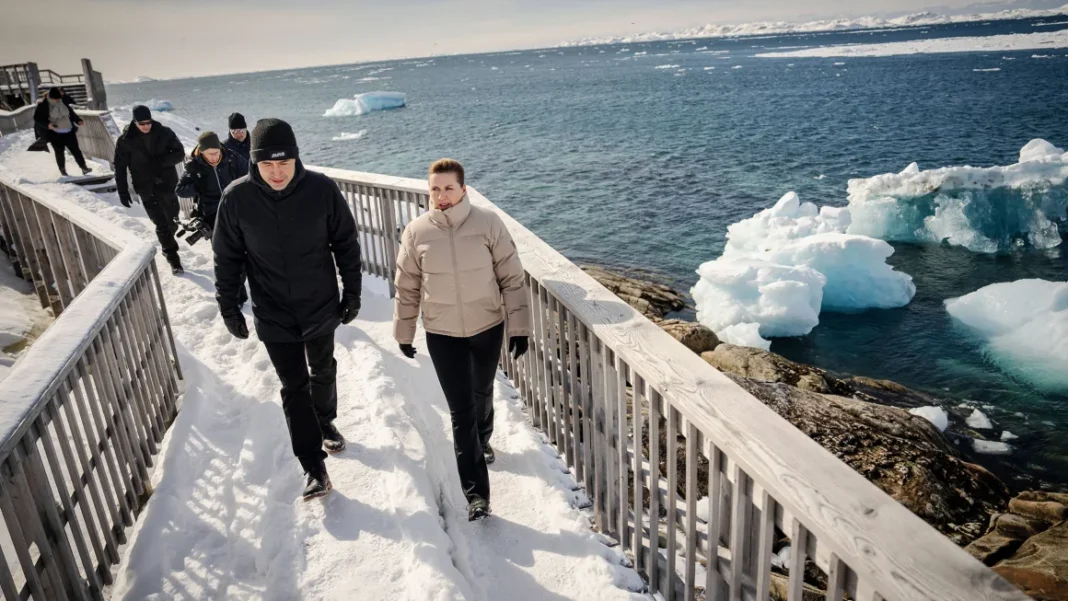A staggering 85% of Greenland’s population strongly opposes U.S. control. Danish Prime Minister Mette Frederiksen’s visit to Greenland comes at a time of growing tensions over Trump’s territorial ambitions. “Greenland belongs to the Greenlanders,” Frederiksen stated firmly while addressing America’s recent interest in buying the world’s largest island. The strategic Arctic territory, with its 57,000 residents, has caught U.S. attention because of its prime location. It offers the shortest route between North America and Europe and holds vast untapped mineral resources.
Greenlanders support eventual independence from Denmark, which gave them extensive self-governing powers in 2009. They remain careful about moving too quickly toward full sovereignty. The new Greenlandic Prime Minister Jens-Frederik Nielsen wants to deepen their commitment to Denmark while protecting their right to self-determination. “We do not belong to anyone else. We determine our own future,” Nielsen declared, directly challenging Trump’s plans to annex the territory.
Danish PM Declares Greenland ‘Not For Sale’ During Arctic Visit

Image Source: Al Jazeera
Danish Prime Minister Mette Frederiksen landed in Greenland on Wednesday to begin a crucial three-day visit. She wasted no time making her position clear about the territory’s status. “The U.S. shall not take over Greenland. Greenland belongs to the Greenlanders,” Frederiksen told reporters in Nuuk.
This high-stakes visit follows U.S. Vice President JD Vance’s controversial trip to the island just days ago. During his stay, Vance sharply criticized Denmark’s management of the territory. “Our message to Denmark is very simple. You have not done a good job by the people of Greenland,” he stated during his visit to a U.S. military base.
Frederiksen described her mission as supporting Greenland “in a very, very difficult situation”. She stressed how important it was for Denmark, Greenland, and Europe to unite against external pressures. “It is clear that, with the pressure coming from the Americans on Greenland in terms of sovereignty, borders, and the future, we must stand together”.
During her stay, Frederiksen promised to work toward equal rights for both Greenlanders and Danes within the Danish realm. She also called the U.S. attempts to influence Greenland “unacceptable pressure”.
Tensions rose after Trump repeated his wish for the United States to acquire Greenland, which he called an “absolute necessity” for U.S. national security. Reports suggest Trump hasn’t ruled out using military force or economic pressure to achieve this goal.
In spite of that, Greenland’s new Prime Minister Jens-Frederik Nielsen confirmed plans to strengthen Danish ties until Greenland could achieve its ultimate goal of becoming a sovereign nation. Experts say Frederiksen’s visit will comfort the island’s 57,000 residents. Most want independence from Denmark but have no desire to become part of the United States.
“I think it’s very, very important and it’s very reassuring for Greenlanders to see a Danish head of government,” said Mikaela Engell, an expert on the Arctic territory.
Vance’s Controversial Trip Sparks Diplomatic Tensions

Image Source: essanews.com
A diplomatic storm erupted between longtime NATO allies when Vice President JD Vance visited Greenland’s Pituffik Space Base on March 29. His harsh criticism of Denmark’s management of Greenland sparked intense reactions.
“Our message to Denmark is very simple: You have not done a good job by the people of Greenland,” Vance stated. “You have underinvested in the people of Greenland and you have underinvested in the security architecture of this incredible, beautiful landmass”.
Vance claimed Denmark failed to shield Greenland from “aggressive incursions from Russia, from China, and other nations”. He believed Greenlanders would “fare better coming under the United States security umbrella than under Denmark’s security umbrella”.
Danish officials responded quickly and firmly. Foreign Minister Lars Løkke Rasmussen addressed Americans directly in a two-minute video: “We are open to criticisms, but let me be completely honest, we do not appreciate the tone in which it’s being delivered. This is not how you speak to your close allies”[103].
Rasmussen admitted both countries had “harvested the peace dividend” in the Arctic, assuming it would stay a “low-tension area.” He stressed: “That time is over”.
Danish Prime Minister Frederiksen pushed back against Vance’s remarks: “For many years we have stood side by side with the Americans under very difficult circumstances. Therefore the vice president’s description of Denmark is not a fair one”.
The political fallout in Greenland happened quickly. A coalition government formed as four of the five parties in Greenland’s parliament united against American pressure. Their coalition agreement stated clearly on its first page: “Greenland belongs to us”.
Greenland’s new prime minister, Jens-Frederik Nielsen, saw Vance’s visit as a “lack of respect” for his people. He called for unity: “It is very important that we put aside our disagreements… because only in this way will we be able to cope with the heavy pressure we are exposed to from outside”.
Strategic Resources Fuel Great Power Competition in Arctic
The melting Arctic ice has sparked a race to control its untapped wealth, pushing global powers into a complex battle for dominance. Studies show the region has about 13% of the world’s undiscovered oil and 30% of its natural gas. The Arctic’s riches go beyond fossil fuels. Greenland holds vast deposits of rare earth elements, graphite, niobium, titanium, lithium, hafnium, uranium, and gold that power modern technology.
The Arctic ice is melting faster than ever – four times more quickly than the global average. New shipping routes between Europe and Asia have opened up, and areas once locked in ice are now ready to exploit.
Denmark has stepped up its game with a massive 14.6 billion kroner (£1.6bn) boost to protect its Arctic interests. The money will buy three new Arctic naval ships that can carry helicopters and drones, plus long-range surveillance drones and better satellite systems.
Russia already dominates the Arctic scene. They’ve built 475 new military sites and bases north of the Arctic Circle. Their 16 new deep-water ports are protected by advanced air defense systems and anti-ship missiles. China has jumped into the mix too. Though they have no Arctic territory, they’ve dubbed themselves a “near-Arctic state” and made the region part of their “Polar Silk Road” plans.
The United States sees more than just resources at stake. The Pentagon’s 2019 Arctic Strategy report shows how the region helps counter Russian and Chinese influence. American interest in Greenland focuses on getting critical minerals while keeping rivals away from the territory.
The Arctic Council used to focus on protecting the environment. Now it faces tough choices as nations rush to extract resources. Experts say that mutually beneficial alliances are vital for everyone who wants to succeed in this fast-changing frontier, even as tensions rise.
Greenland finds itself in the middle of rising Arctic tensions as it balances Danish protection, American ambitions, and its journey toward sovereignty. Denmark protects Greenland’s 57,000 inhabitants, but the territory’s rich mineral resources and key location draw constant international attention. Denmark’s Prime Minister Frederiksen showed strong support through her visit that backed Greenlandic autonomy while protecting against outside pressure.
The race for Arctic resources creates a complex political situation. Russia expands its military presence while China increases its influence, and America stakes its claims. All this highlights the region’s importance. In spite of that, Greenland’s leaders stay firm in their vision as they seek balance between future independence and strong Danish ties.
These changes point to a fundamental shift in Arctic relationships where competition for resources and territorial claims alter traditional alliances. Public support remains strong, and Greenland shows determination to chart its path forward. The territory continues to shape its future exactly as it chooses.



